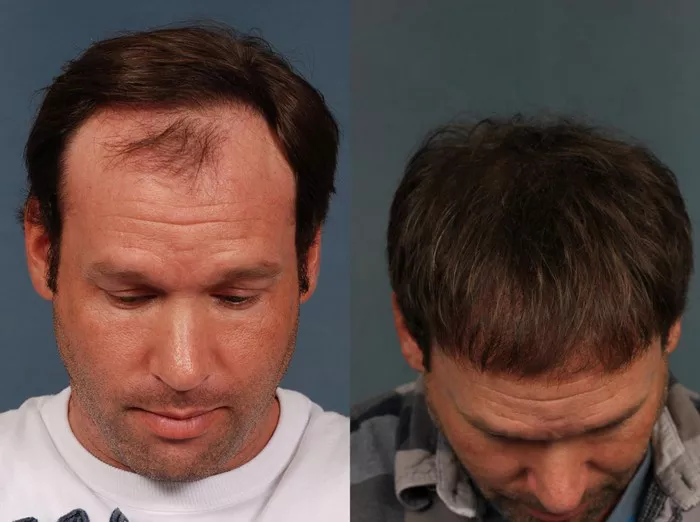Undergoing a Follicular Unit Extraction (FUE) hair transplant is a significant step toward regaining your confidence and a full head of hair. However, it’s essential to understand the healing process to manage your expectations and ensure a smooth recovery. In this comprehensive guide, we’ll explore the timeline of recovery after an FUE hair transplant, shedding light on key factors and stages that affect the healing duration.
1. Immediate Post-Transplant Care
The healing process begins immediately after your FUE hair transplant. This initial phase is crucial for a successful and comfortable recovery. Here’s what to expect:
a. Surgical Site Appearance: Right after the procedure, the transplanted area will look red and may have some scabbing. This is entirely normal and typically subsides within a week or two.
b. Pain and Discomfort: Some patients may experience mild discomfort or pain in the donor and recipient areas. Your surgeon will prescribe pain relief medication to manage this.
c. Rest and Recovery: It’s essential to rest and avoid strenuous activities for the first few days. Follow your surgeon’s post-op instructions meticulously.
2. Immediate Post-Operative Healing: First Week After Surgery
The first week is a crucial period in the FUE hair transplant healing process:
a. Scab Shedding: Small scabs will form around the transplanted follicles and donor area. These typically fall off within the first week, revealing the transplanted hair beneath.
b. Staples and Sutures: If your surgeon used sutures or staples, they will be removed within 7 to 14 days post-surgery. Dissolvable sutures do not require removal.
c. Avoid Sun Exposure: Protect your head from direct sunlight and UV exposure, as this can harm the newly transplanted hair and your skin. Wear a wide-brimmed hat when outside.
3. Initial Hair Growth and Recovery: Weeks 2 to 12
During this period, you’ll notice the early stages of hair growth and further healing:
a. Shock Loss: It’s common for the transplanted hair to shed initially. This is known as “shock loss” and is a temporary setback. The hair will gradually regrow.
b. Hair Growth: By the second month post-surgery, you’ll start to see signs of new hair growth. Initially, the hair may be fine and thin, but it will thicken over time.
c. Normal Routine: You can gradually resume your normal activities and grooming practices under your surgeon’s guidance. However, be gentle with your hair and avoid over-styling.
4. Maturing and Thickening Hair: Months 4 to 9
As you move into the middle months of your recovery, the transplanted hair will continue to mature:
a. Thickening and Density: The transplanted hair will become thicker and more dense. You’ll start to notice a significant difference in your appearance.
b. Maintenance: At this stage, it’s essential to maintain a regular hair care routine, including washing and conditioning. Follow your surgeon’s guidance on products and techniques.
c. Sensitivity: Some individuals may experience mild scalp sensitivity or numbness. This is normal and tends to resolve over time.
5. Almost There: Beyond 9 Months
At around nine months post-surgery, your FUE hair transplant should be nearing its final outcome:
a. Full Results: Most patients will achieve their full hair transplant results by the one-year mark. The transplanted hair will blend seamlessly with your existing hair, providing a natural and undetectable result.
b. Hair Length: The length of the transplanted hair can vary, but it generally grows at an average rate of half an inch (1.25 cm) per month. You can style it as desired.
c. Permanent Growth: The transplanted hair is permanent and should last a lifetime. It is not subject to the effects of male or female pattern baldness.
6. Factors Influencing Healing and Recovery
Several factors can influence the duration of healing and recovery after an FUE hair transplant:
a. Individual Healing: The rate at which your body heals and accepts the transplanted hair can vary from person to person.
b. Transplant Size: The number of grafts transplanted can affect healing time. Larger procedures may take longer to recover from.
c. Post-Operative Care: Following your surgeon’s instructions diligently can significantly impact your healing speed and final results.
See Also: How Much Is the Average Hair Transplant Cost: A Quick Guide
In conclusion
Understanding the FUE hair transplant healing process is essential for managing your expectations and achieving a successful outcome. Each stage, from the immediate post-operative care to the final results, is a crucial part of your journey to regaining your confidence and a full head of hair. By following your surgeon’s guidance, maintaining a regular hair care routine, and being patient, you can enjoy the long-lasting and natural results of your FUE hair transplant.


